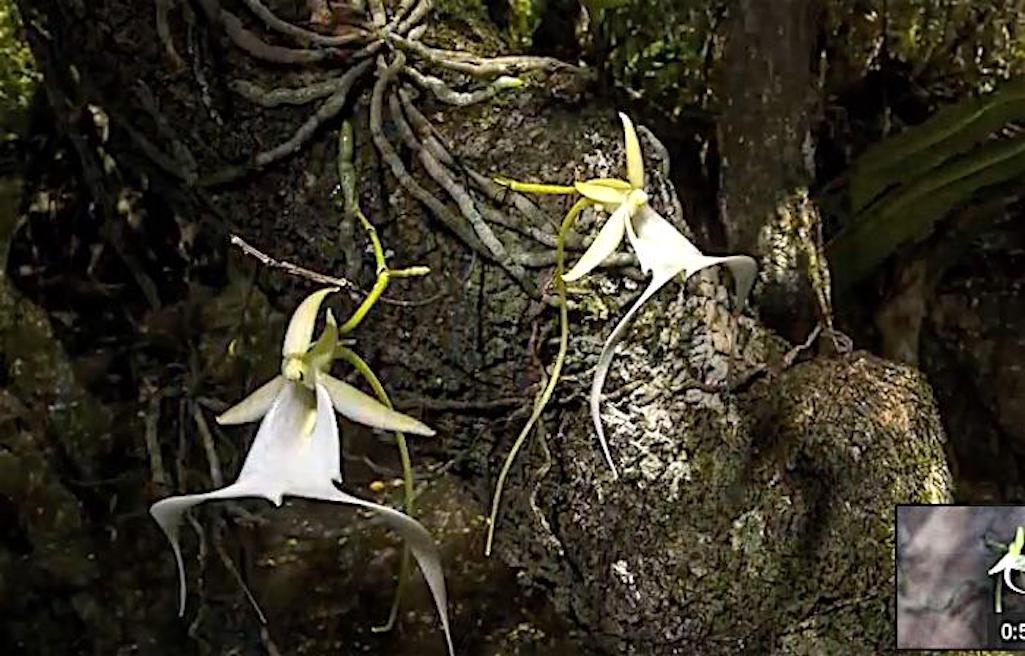
Without Endangered Species Act protection the ghost orchid found in Big Cypress National Preserve will vanish, according to conservationists/U of Florida
The ghost orchid, perhaps the rarest of the 30 species of orchids in Big Cypress National Preserve, needs to be protected under the Endangered Species Act or risk being lost to extinction, according to a petition conservation groups submitted to the U.S. Fish and Wildlife Service.
The petition — submitted by the National Parks Conservation Association, The Institute for Regional Conservation, and The Center for Biological Diversity — also asks the agency to designate critical habitat essential to the survival and recovery of the orchid, which they said had declined by more than 90 percent globally.
According to the National Park Service, "[T]he ghost orchid's tangled mass of green roots clings tightly to the trunks of various tree species, including cypress, pond apple, and maple, and is visible year-round. It is distinguished from other species of orchid by the presence of thin white markings dotting its roots. In June and July, at the peak of mosquito season, the ghost orchid blooms. At night, it is pollinated by the sphinx moth, whose long tongue or proboscis allows it to receive a sweet reward of nectar from the flower that is not easily reached by other insects."
The orchid thrives in humid environments, as it draws moisture from the air. Its unique beauty has led to poaching of the orchid for collectors.
“The ghost orchid is the rare plant species that captures just as much attention as some charismatic megafauna in the state of Florida. This mysterious, beautiful plant captivates Floridians, reminding them of our state’s unique, wild heritage,” said Melissa Abdo, Ph.D., regional director at NPCA.
“While the ghost orchid has always been rare, threats to its existence have become dire in recent years," she continued. "Poaching, climate change, loss and modification of habitat and direct threats to the ecosystem — even in protected areas like Big Cypress National Preserve — could spell disaster for the species. That is why it is imperative that the ghost orchid be afforded protections under the Endangered Species Act.”
Abdo has longstanding experience with the ghost orchid, having helped discover new subpopulations of the plant in Big Cypress National Preserve in the early 2000s.
“The ghost orchid is an icon of beauty and nature’s abundance,” said George Gann, executive director at The Institute for Regional Conservation. “Its long demise in southern Florida and Cuba, in part due to its immense popularity, is a bellwether of things to come. We can do nothing and watch another species go extinct in the wild, or we can act now to protect and restore this flagship orchid and its wild habitats. The Florida we envision includes a restored greater Everglades ecosystem with all of its biological diversity, including the ghost orchid.”
The ghost orchid (Dendrophylax lindenii), made popular by Susan Orlean’s book The Orchid Thief and the movie Adaptation starring Meryl Streep and Nicholas Cage, is found only in Florida and Cuba.
There are only an estimated 1,500 ghost orchid plants left in Florida, and less than half are known to be reproductively mature, according to the conservation groups. The Florida populations of ghost orchid have experienced a 30 percent to 50 percent decline. Chief threats to the flower include poaching, habitat degradation and the climate emergency.
“The ghost orchid is emblematic of wild, beautiful Florida, and this flower’s future depends on our ability to protect it from poaching and habitat loss,” said Jaclyn Lopez, Florida director at the Center for Biological Diversity. “The steady decline of ghost orchid populations coupled with the threats of the climate crisis puts this enigmatic plant at risk of extinction.”
The orchid is long-lived and may take 15 years or more to reach reproductive maturity. Its current range includes the Big Cypress National Preserve, Florida Panther National Wildlife Refuge, Fakahatchee Strand Preserve State Park, Audubon’s Corkscrew Swamp Sanctuary and additional conservation and tribal areas in Collier, Hendry and possibly Lee counties.



Add comment